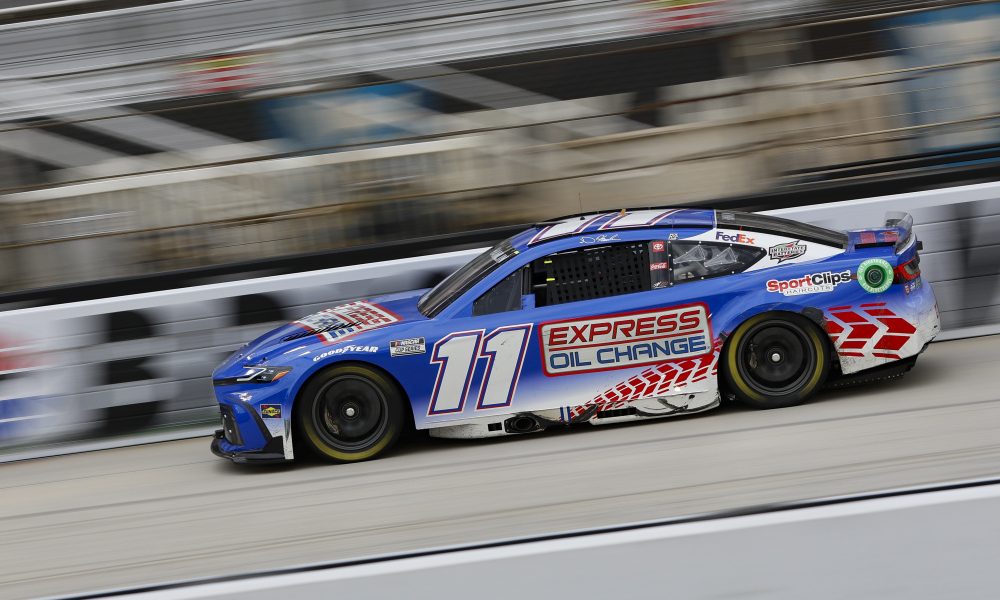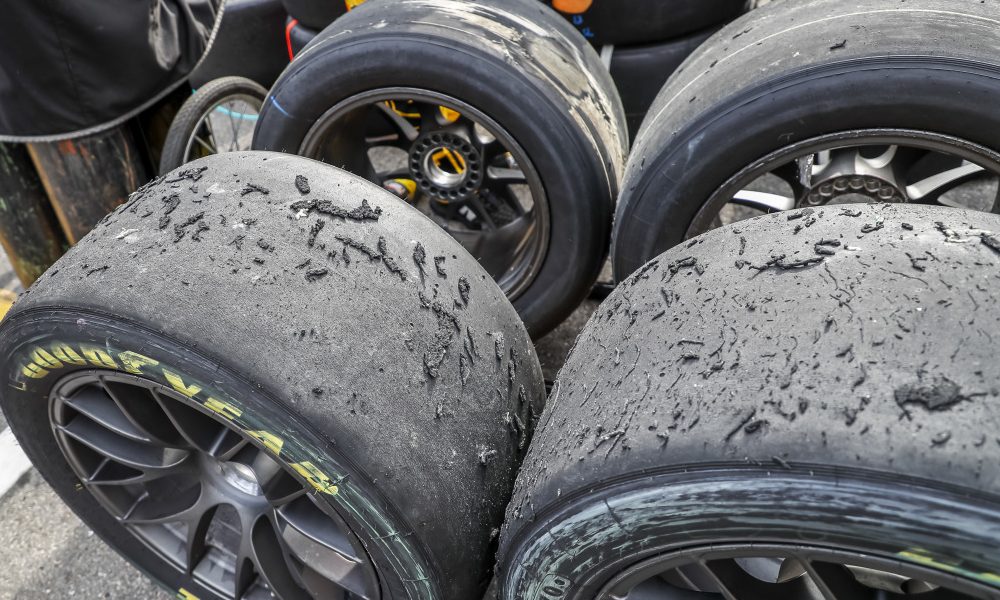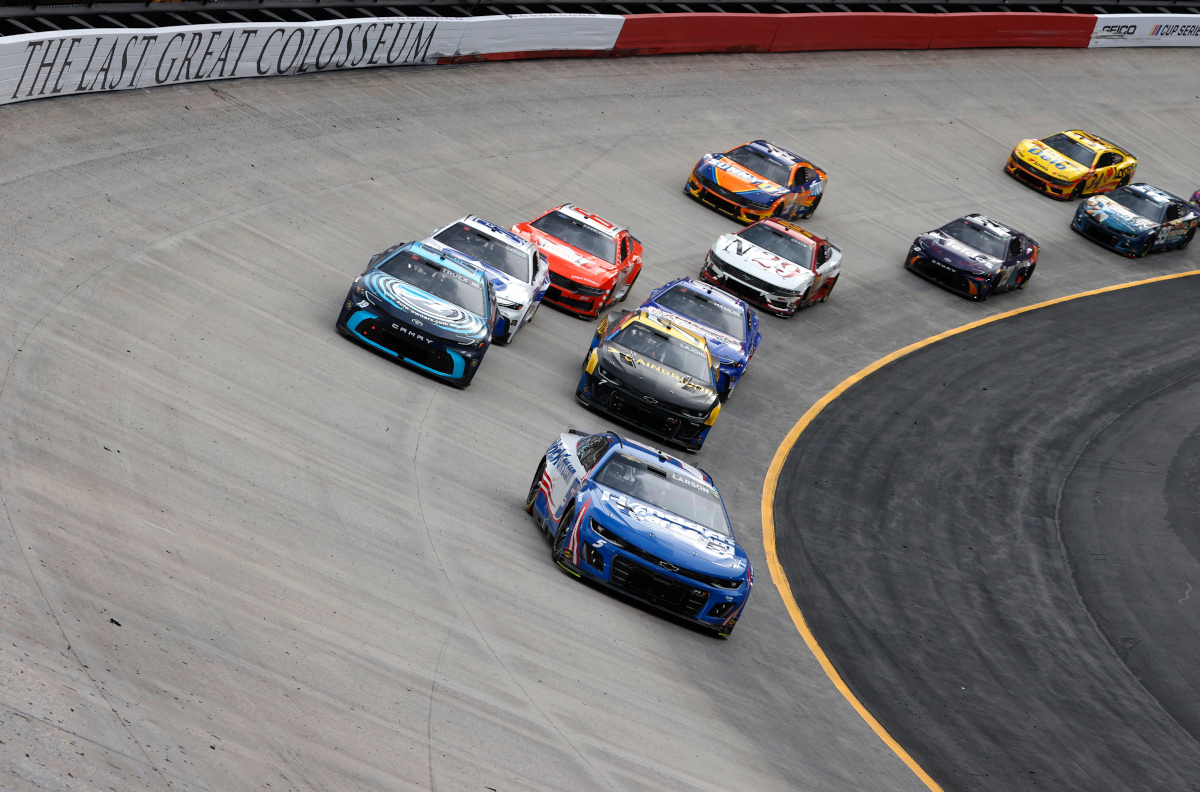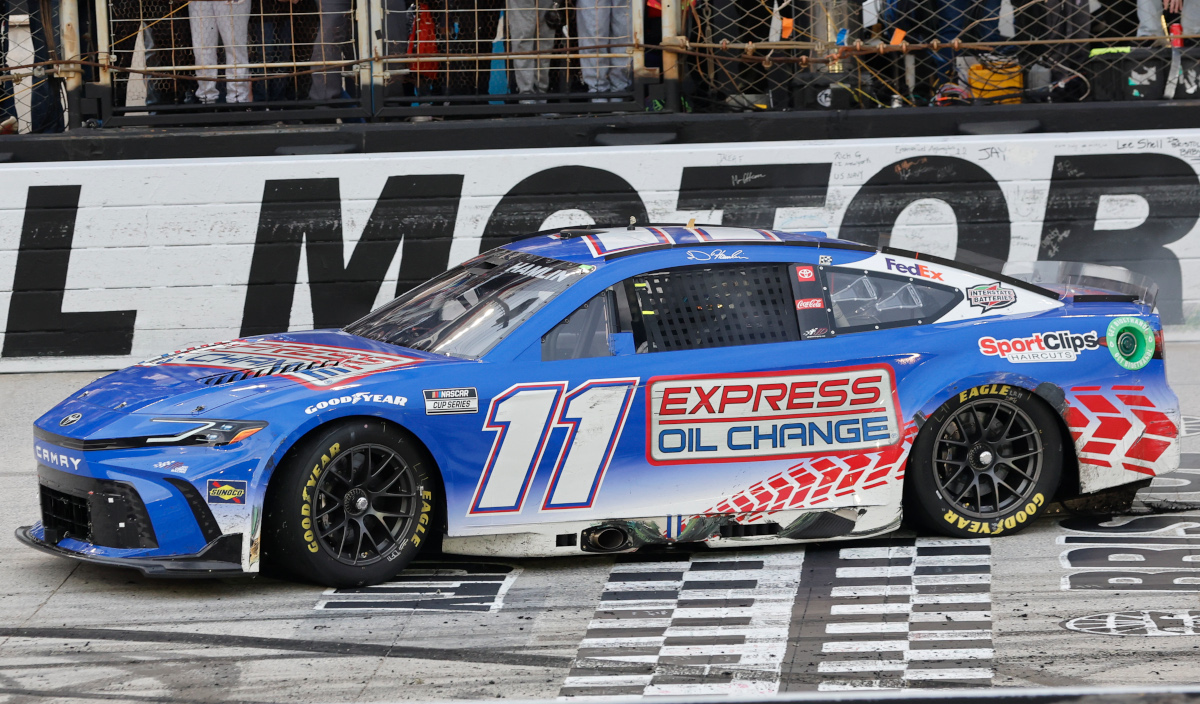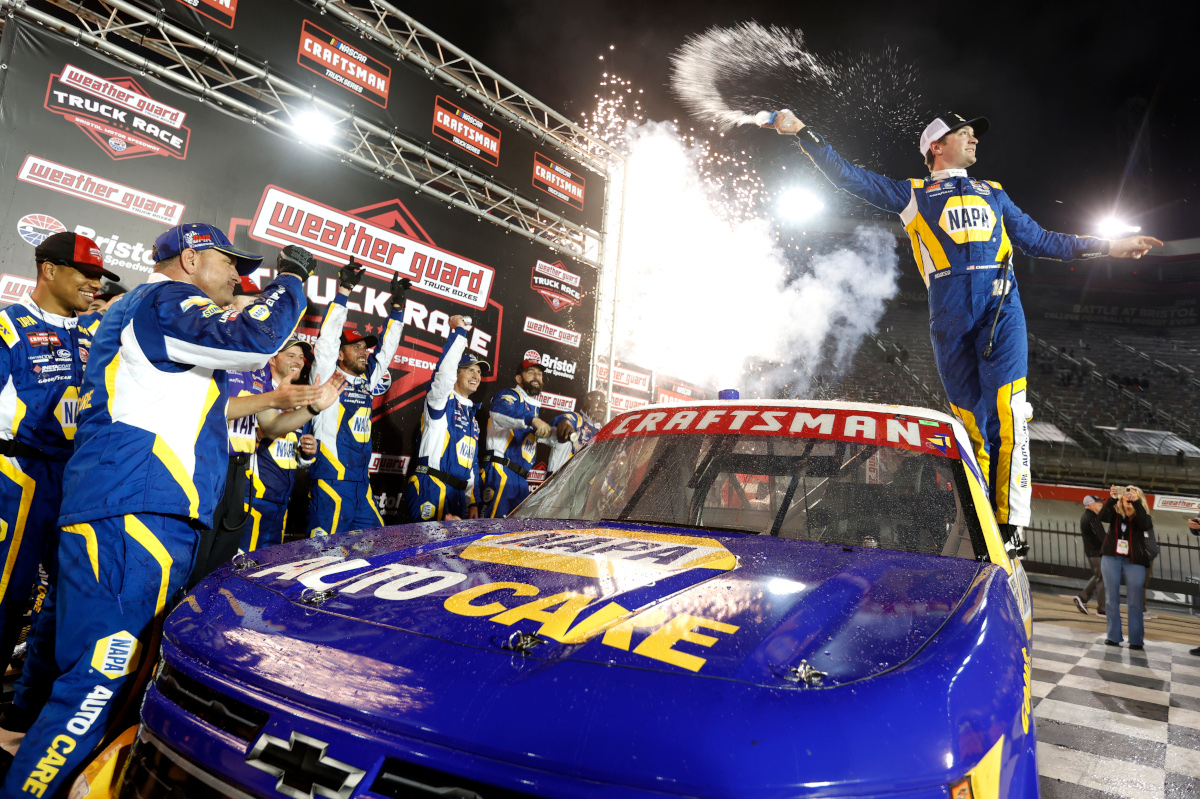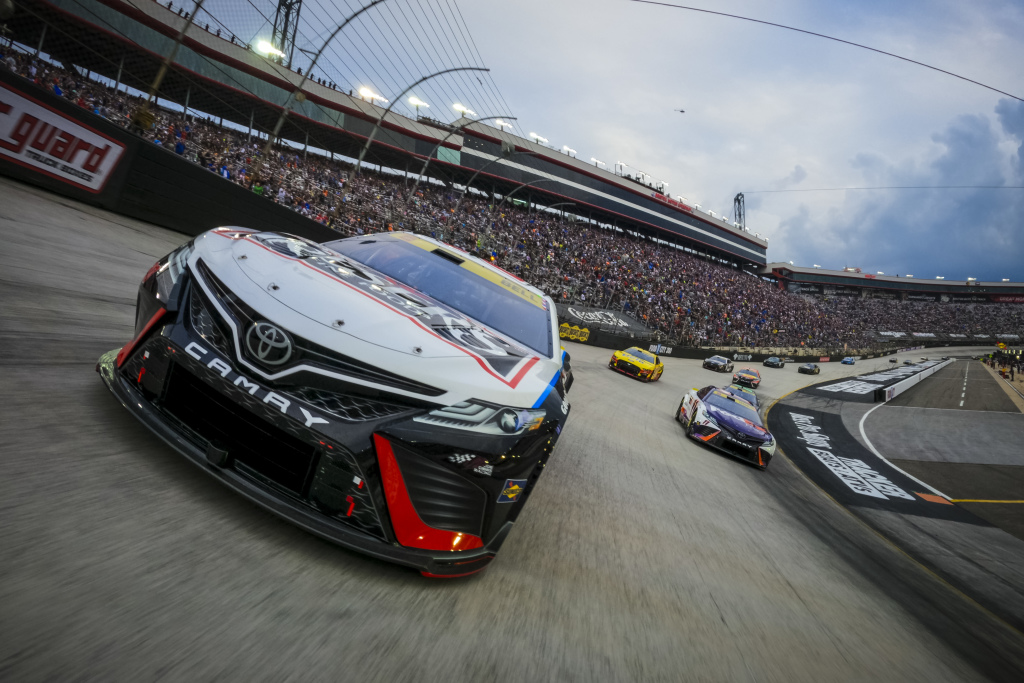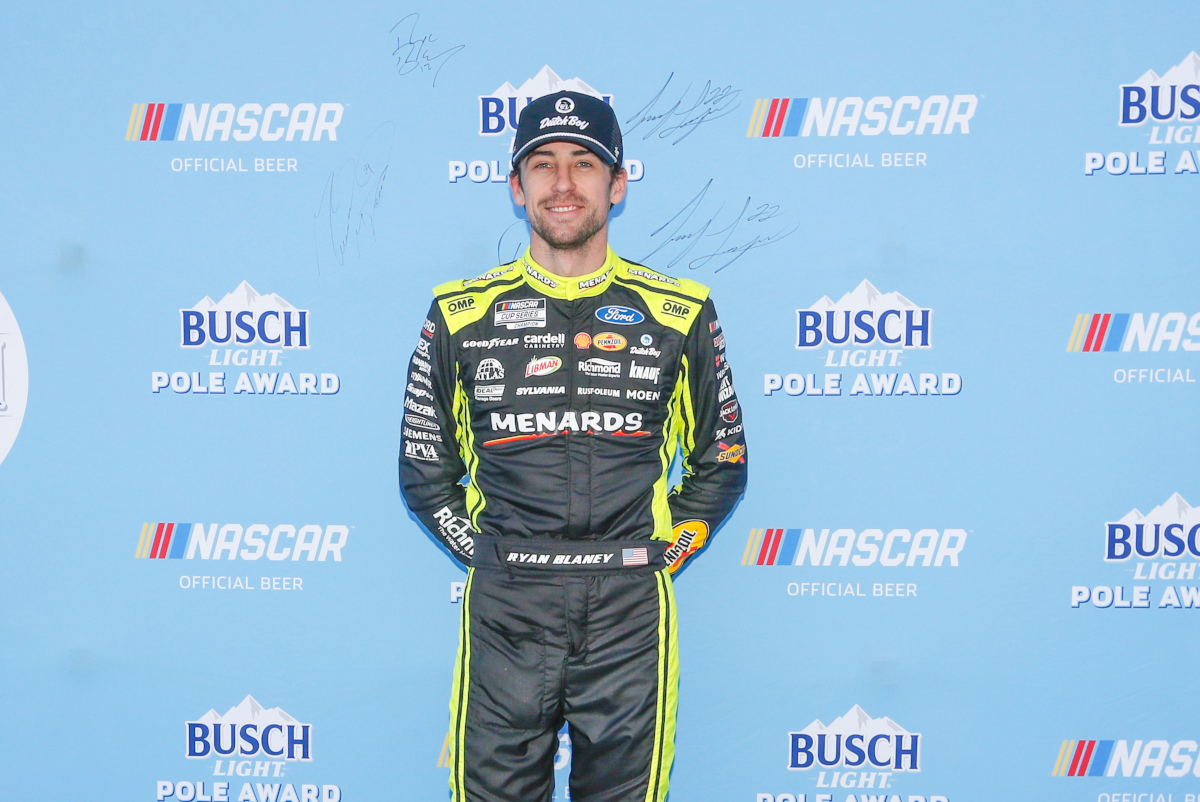It’s been over nine years since Aaron Rodgers told Green Bay Packers fans to R-E-L-A-X over the team’s slow start to the 2014 season. On Sunday night, after winning the tire war at Bristol Motor Speedway, Denny Hamlin and crew chief Chris Gabehart had a pointed message of their own for the NASCAR industry and its fans.
“Don’t overreact,” Hamlin said.
Unfortunately as it pertains to the amusement factor as it surely would have gone viral, Hamlin did not spell out his statement as Rodgers did. But the message was still loud and clear. The same for Gabehart’s follow up to Hamlin.
“It’s not bad. It’s OK,” Gabehart said. “Quit beating Goodyear up over things like that. They’re supposed to be part of the sport and make it hard on us. I think that’s the narrative we’ve got to start talking about.”
The Food City 500 was unexpectedly entertaining. Although there were questions about what happened to the racetrack at the end of practice and into qualifying Saturday, it’s unlikely anyone could have foreseen how the race would unfold.
Tire wear, resin and marbles, oh my. It was not a Cup Series race fans, drivers, engineers, or crew chiefs are used to seeing. Cup series races are, shall we say, a bit predictable, with hard tires and teams playing out each fuel run.
But there was no chance of that at Bristol. With such high tire wear, it was 40 to 50 laps before drivers were hanging on or in trouble. A fuel run is 190 laps at Bristol, so tires probably shouldn’t have started to give up until 80 to 100 laps into a run.
The theme of the race was about tire management. Some drivers did it better than others. And that’s where the entertainment came in, because it’s not something drivers are used to doing or people get to see them figure out. NASCAR racing has been more about on-throttle time and laying down qualifying laps while aggressively attacking a corner, so it was new to see drivers having to balance how hard to push and slow the pace of the race down.
“This is the first time the driver played a huge role in a long, long time,” Hamlin said. “Long time. It’s a different philosophy from what we’re used to, which is everyone is just kind of on the gas all the time running the bottom, the shortest way around. Technique was a huge deal today.”

Don’t fall for the easy and often-used criticism that the tires failed. The tires certainly didn’t fail. There is a difference between tire failures, which blow out repeatedly during a race and tire wear. Indianapolis in 2008, which so many were quick to reference, was a race of tire failures. On that day, the longest run of the race was about 12 laps before the tires started blowing.
Sunday at Bristol was a race of tire wear, albeit drastic wear. The tires lasted, just not as long as expected or teams would hope. However, there is nothing wrong with tire wear and tire management races; the sport needs more. Afterwards, it seemed nearly everyone could agree that having tire fall off is what racing needs, but for some unexplainable reason, there was a lot at Bristol.
And that’s where the overreaction messages come in. Yes, it was different and unique and unexpected. It was fun, though. It made for a race where no one was yelling about dirty air and being unable to pass.
No, this was a driver’s race.
“I would rather be disciplined as a driver than deal with aero tight,” Ryan Preece posted on X, formerly Twitter.
Hell yeah. More of that. Bristol might not have been something that everyone is used to seeing or understanding, but nothing was wrong with what happened. The short tracks could use more of the show Sunday had.
Who knows? Maybe one day the NASCAR industry will look back and say what happened at Bristol wasn’t planned, but it ended up being a blessing in disguise. One of the most entertaining short track races in recent memory wasn’t the result of the horsepower debate or a rules package, but tire wear.
“It was fantastic,” Gabehart said. “The whole weekend was nothing that any of us expected, the driver, the crew chiefs, the engineers, the pit crew, the team, the spotter. From the minute practice was over, we suspected something was going to be different. I think a lot of us thought maybe 80, 100 (laps) in, this place would rubber in and get a little more familiar. But it did not.
“It was a blast. I’m not just saying that because we won. I’m saying that because it was fun to have to do something so unrefined. Everything about our business gets to be 16th of a round and 10th of an air pressure. If you just maneuver this 3 inches, you’ll be perfect. It was not going to be perfect this weekend ever. I think that made for a fantastic show.”
So, just relax, as Rodgers would say. Or don’t overreact, as Hamlin advised. It was wild, but everyone came out the other side knowing something good happened even if no yet knows how.

